Stinkhorn mushroom – Identification and Control

Q: A mulched area under one of my trees has a large number of stinkhorns in it. It is beside my children’s bedroom windows and it certainly has the correct name of “stink”! Is there any way to kill them and prevent them from coming back?
A: There are four common stinkhorn mushrooms I’m aware of.
Common stinkhorn, Phallus impudicus, has a white shaft and a brownish-green “head”
Elegant stinkhorn, Mutinus elegans, (and also M. caninus and M. ravenelii), has a orange-pink shaft and a dark, tapered head.
Latticed stinkhorn, Clathrus ruber, is orange pink and looks like a red bell pepper turned inside out.
Stinky squid mushroom, Pseudocolus fusiformis, looks like a pink squid.
As their name implies, they all stink to high heaven.
They grow in damp wood mulch, emerging from a whitish, semi-solid “egg”. Once they take on their final shape, their spore sacs emit a green slime that attracts flies and beetles to the area. The insects feed on the mushroom and carry the spores wherever they land.
Since the fungi depend on warm, damp mulch, the easiest way to control them would be to loosen the area with a rake and halt any nearby irrigation.
See Phallus impudicus & Phallus hadriani: The Common Stinkhorn,
Mutinus elegans, M. caninus, & M. ravenelii,
Clathrus: Latticed Stinkhorn, and
Pseudocolus fusiformis: The Stinky Squid.
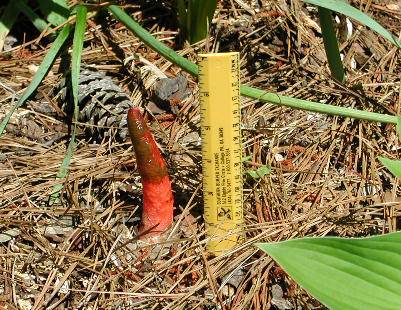
elegant stinkhorn
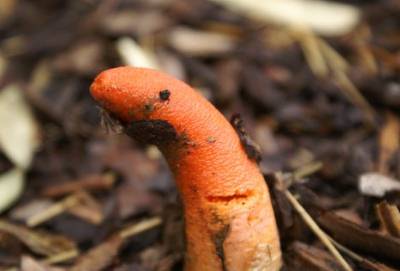
elegant stinkhorn
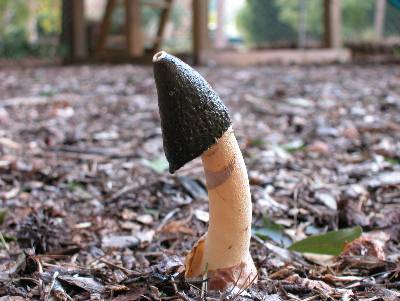
netted stinkhorn
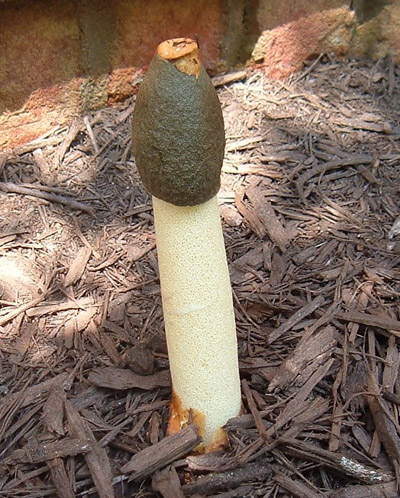
dog stinkhorn
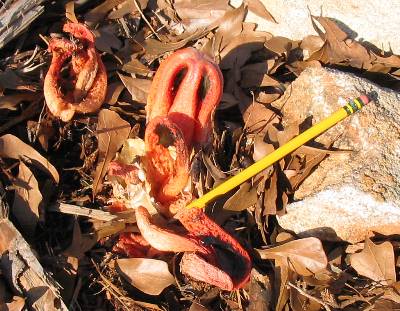
latticed stinkhorn
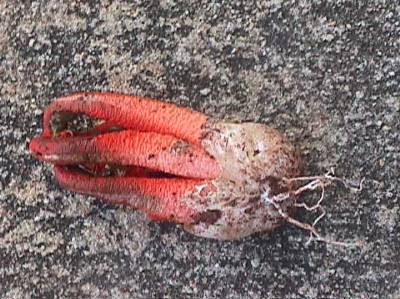
stinky squid mushroom
















